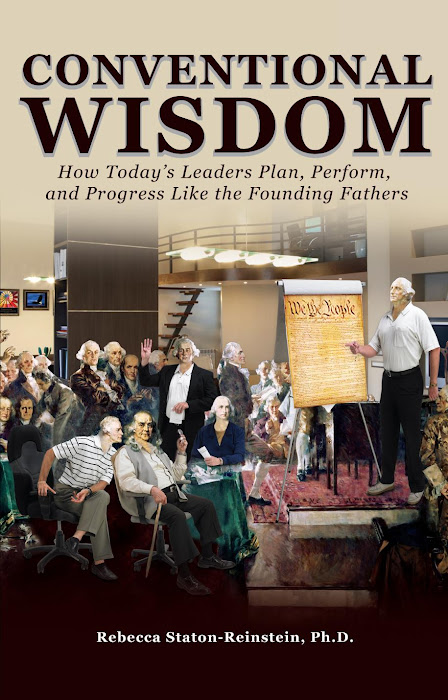- Training budgets dropped 21% between 2007-2009 but are now stabilizing
- Average employee hours spent in formal training was 12.8 - 16.2 hours
- Average spend per employee was $682
- Percentage spend on leadership development rose 24%
- Instructor-led training dropped to 60% of all training hours
- Percentage of organizations using blogs and wikis for learning was 14%.
 |
| Jefferson UVA |
Everybody knows when times are tough, training is the first thing to go. This recession proved the old adage correct again. But is it a smart strategy? If you want people to do more with less, don’t you need to train them to do that?
If you need people who will think outside the corporate norms and come up with ways to help make the company more profitable, don’t you have to provide time, space, and training for that?
If you need every individual to be more responsible and accountable, don’t you have to train them for that?
Although businesses report a new emphasis on aligning the training with the business and making use of all the ‘learning technologies’ and ‘informal learning’ available, is there really any difference?My observation, and that of my colleagues in the training arena, is that nothing much has changed. Companies still treat the training experience itself as a transformational mechanism. In other words, they send someone to training and then hope they will perform differently. Here’s a recent conversation:
Ø Client: The training didn’t work.
Ø Trainer: What do you mean?Ø Client: People didn’t perform differently or better.
Ø Trainer: What did you do to reinforce the concepts from the class? What was your strategy to help the managers perform better?
Ø Client:????
This conversation has been repeated thousands of times over. At the height of the quality management movement, Japanese managers averaged 40 hours of training a year within a strategic framework of individual and team development.
The common conversation when discussing training options with HR or training managers revolves around the time factor. If a course is designed for 3 days, the immediate demand is to cut it to 2. If 2 days were the norm, cut it to 1 and so on. Why? The time away from ‘real work’ is the criterion, not the content and the context for the training. Many years ago when I was a manager at a large company, the entire company went through extensive training. The days in class weren’t the end. I sat with my manager before and after the class to set goals that we periodically reviewed and she reinforced the concepts. We discussed the ideas at staff meetings and were assigned ‘buddies’ to help us as we changed the way we worked and managed.
This approach has been part of work with my own clients – where they are willing to invest in the development of their people. The results are always there with this approach because, as Sophocles pointed out, Knowledge must come through Action. One-off training IS just a vacation from work, no matter how good it is deemed by the participant. Without the context, no training, technology, or ‘alignment’ will be successful.In the Bersin study managers asked trainers, “What does that mean for us in the next 5 years?” This was seen as a new focus on ‘aligning’ training with the business. I see it differently.
Five years from now, will you have the leadership and managerial capability you need to succeed, to compete in a globalized economy, to reach your goals? A paltry 12 – 16 hours a year won’t do it. For years I’ve asked managers if they had any training before they took up their managerial duties. No matter the situation less than 1% were trained.
Most companies, nonprofits, and government agencies are failing when it comes to developing the next cadre of leaders. The results are appalling management and leadership and the inevitable poor results. People in the trenches often perform heroics so the company won’t go down – which only reinforces management’s bad behavior. At some point it all collapse on itself.
“Are companies shooting themselves in the head?” If companies, governments, and nonprofits (NGOs) want to be around for the long haul they must invest not only in training but in true education – a structured strategy to develop leadership and managerial capacity, to mentor people, to coach them, and to reward great management and leadership, not heroics.
In another context, Thomas Jefferson said, "If a nation expects to be ignorant & free, in a state of civilisation, it expects what never was & never will be." (2) * * * * * *
© Rebecca Staton-Reinstein, Ph.D., president Advantage Leadership, Inc.
(1) Bersin and Associates. The Corporate Learning Factbook 2010, cited by Jennifer Rai via Twitter/LinkedIn
(2) Jefferson in letter to Charles Yancey, January 6, 1816; spelling from original letter





